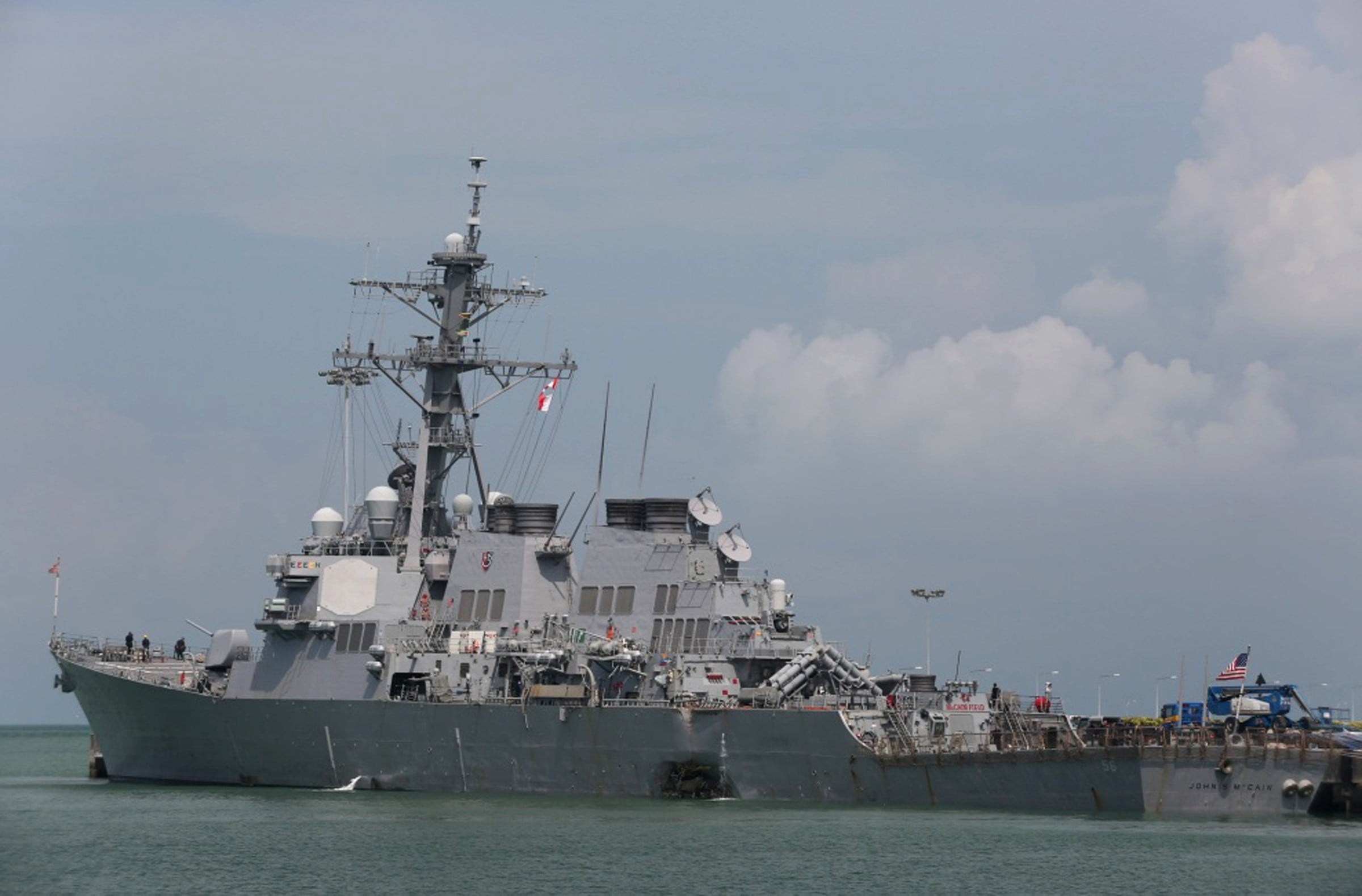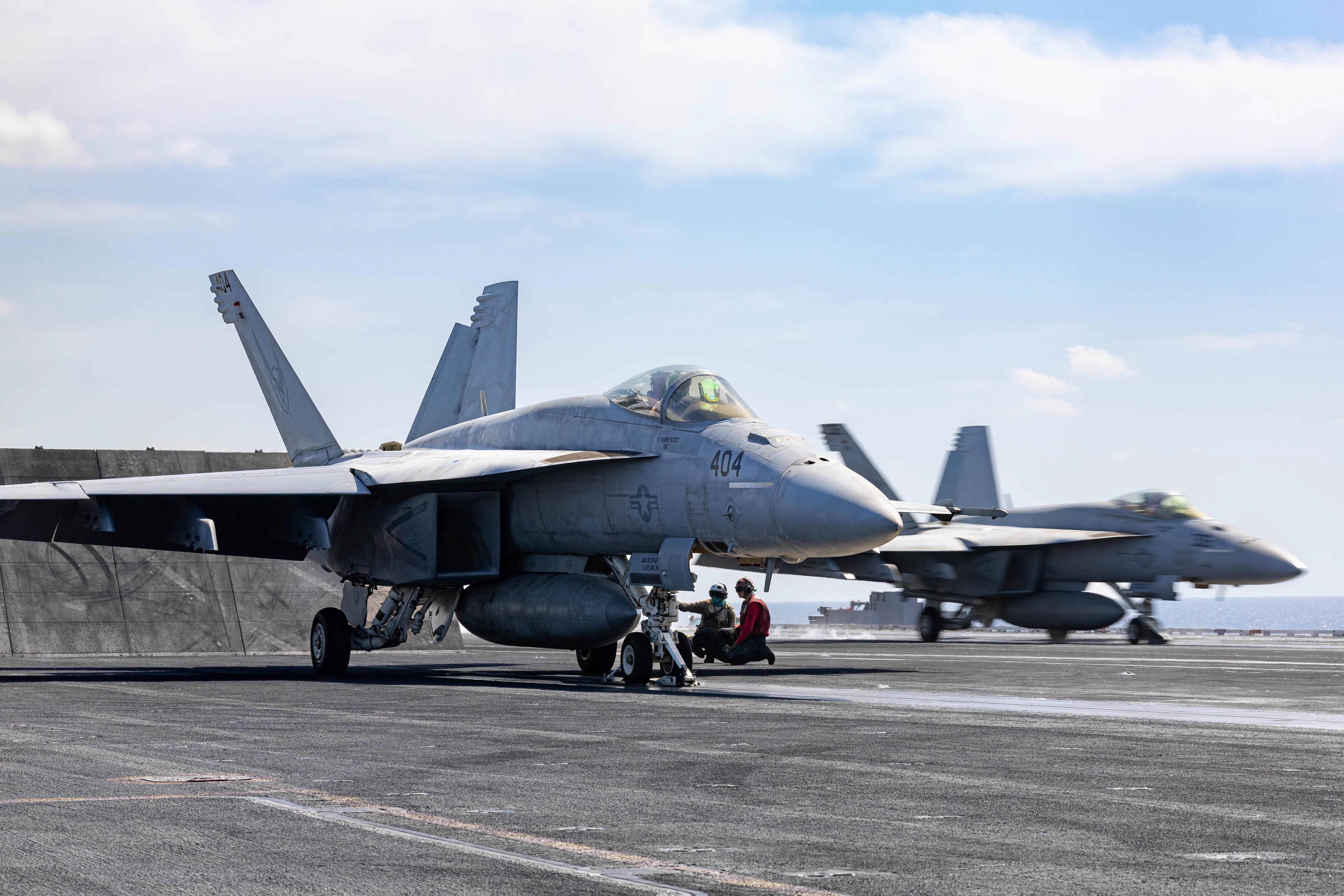“This trend demands more forceful action,” Chief of Naval Operations Adm. John Richardson said.
Declaring that ”this trend needs more forceful action,” Chief of Naval Operations Adm. John Richardson called Monday morning for a global fleet-wide operational pause in order to understand the causes of the service’s spate of fatal at-sea collisions this year.
“I want our fleet commanders to get together with their leaders and their commands to ensure we’re taking all appropriate and immediate actions to ensure safe and effective operations around the world,” Richardson said in a video released Monday morning.
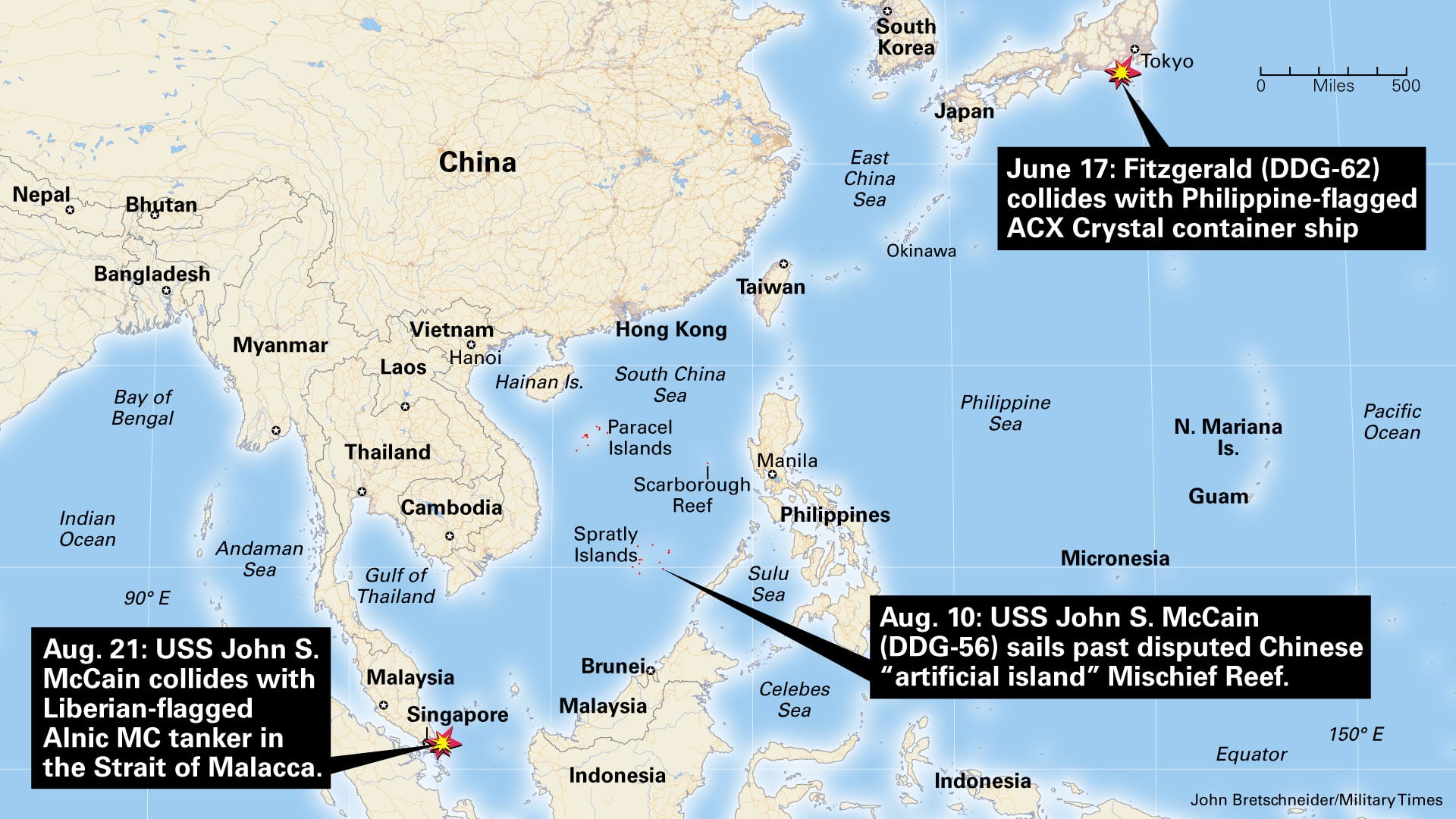
The review will assess ”the contributing factors, the root causes of these incidents,” he said.
His announcement came after the destroyer John S. McCain collided with an oil tanker near Singapore at 5:24 a.m. local time Monday in a high-traffic area of the South China Sea.
Ten sailors remained missing as of 11 a.m. East Coast time and five sailors sustained non-life threatening injuries, according to 7th Fleet.
RELATED
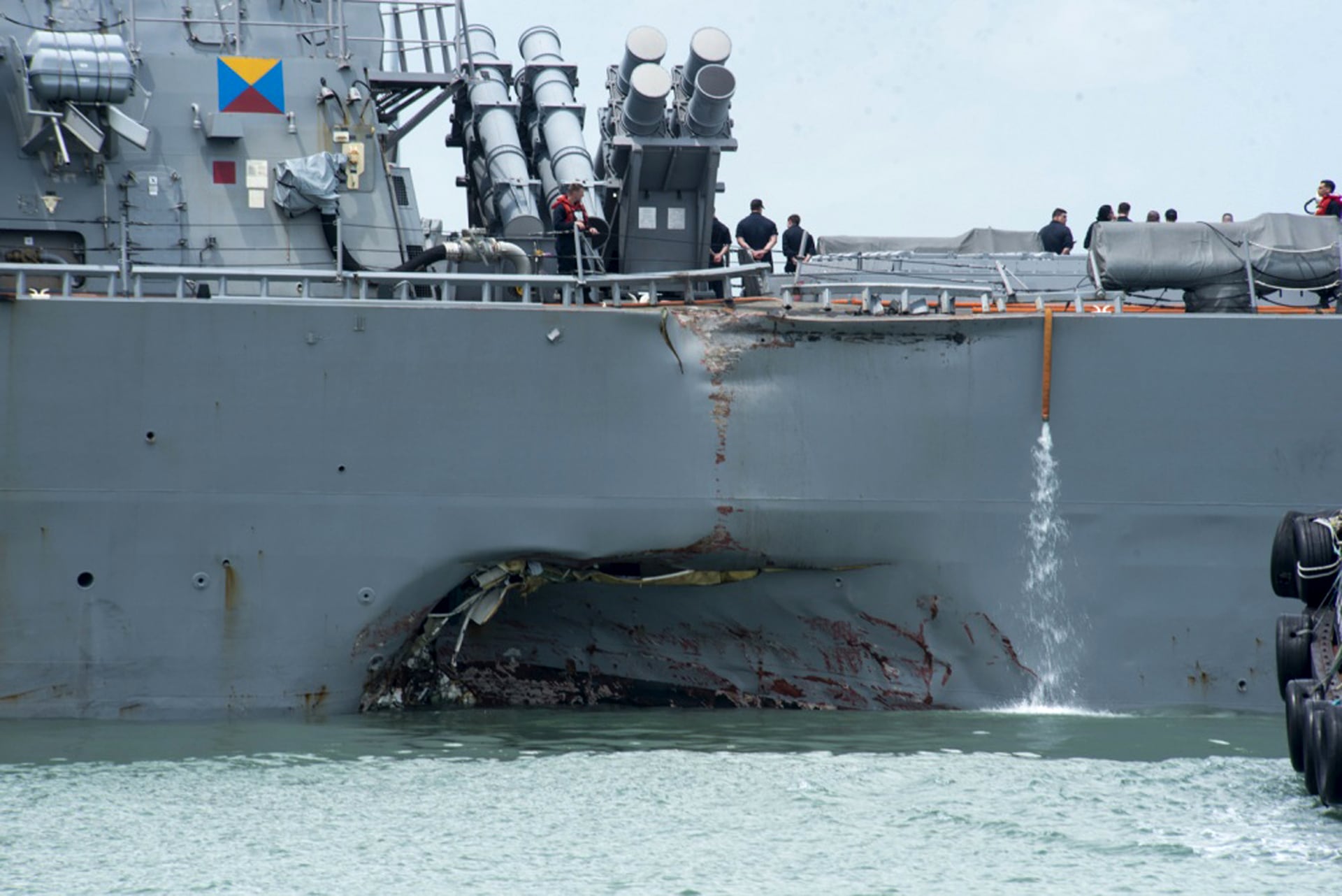
It was the second such at-sea disaster for the Navy’s 7th Fleet this summer. A merchant vessel struck the destroyer Fitzgerald on June 17, opening a massive gash in its side that flooded living quarters and led to the drowning deaths of seven sailors.
The McCain collision was the fourth significant safety incident of 2017 involving a U.S. 7th Fleet ship.
In January, the cruiser Antietam ran aground in Tokyo Bay.
In May, the cruiser Lake Champlain collided with a Korean fishing boat in the Sea of Japan.
The review will look at operational tempo, performance, maintenance, equipment and personnel assessments, he said.
The review will also focus on tactical and navigational proficiency in surface warfare training and career development.
A diverse investigative team will spearhead the effort. Its ranks will include commissioned and enlisted sailors, the Navy’s Inspector General and outside experts, according to the CNO’s office.
“I want this team to be as diverse as they can be so that we don‘t miss anything in our review,” Richardson said.
The review will be ”on a very tight timeline,” he said. ”We need to get to it and take corrective action.”
RELATED
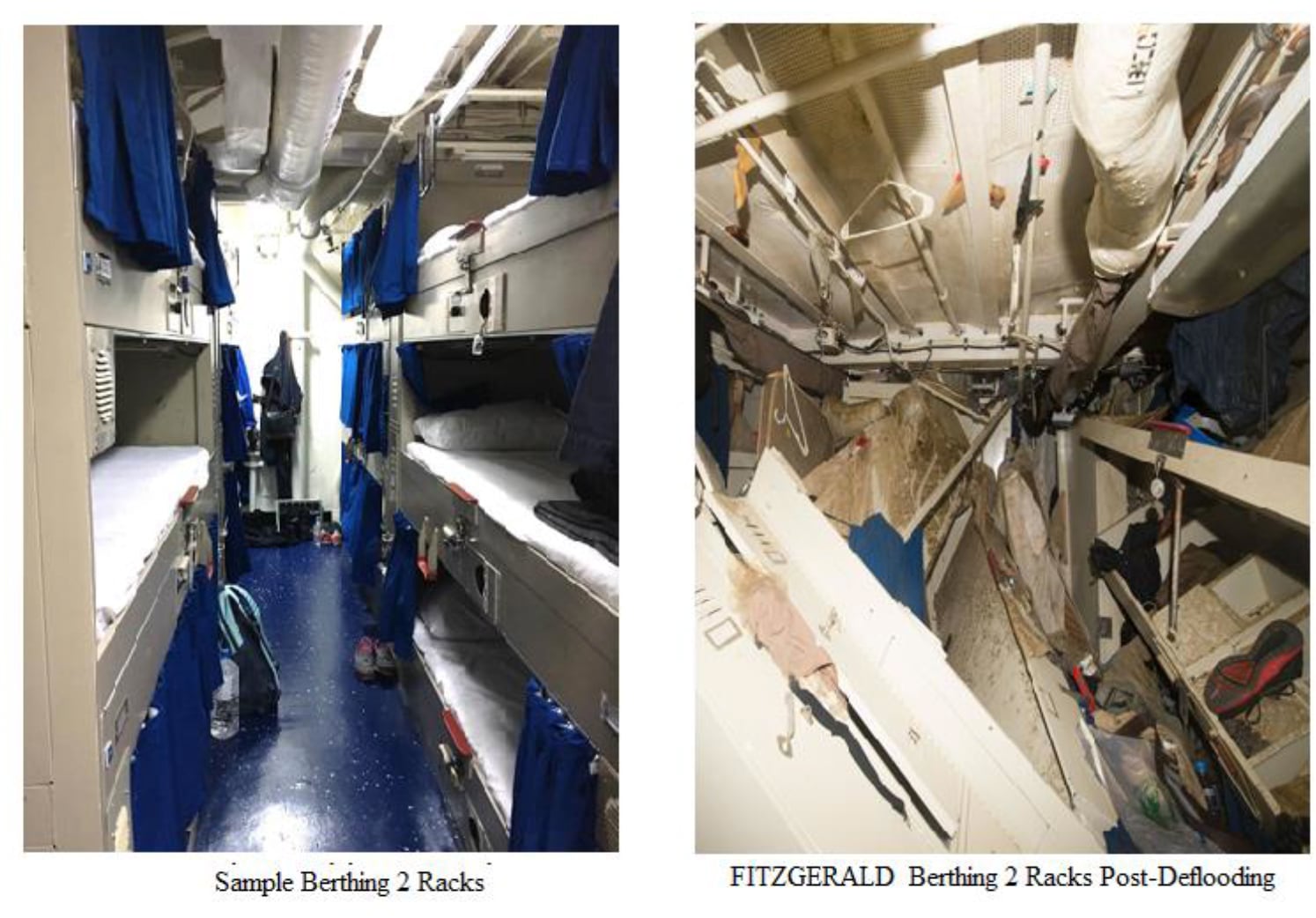
The Alnic MC, a Liberian-flagged oil tanker, struck the rear port side of the McCain at about 5:24 a.m. local time Monday.
Search and rescue efforts continued as of Monday evening in Singapore, and involved U.S. and Singaporean assets, according to the 7th Fleet’s latest statement on the disaster.
“Significant damage to the hull resulted in flooding to nearby compartments, including crew berthing, machinery, and communications rooms,” 7th Fleet said. ”Damage control efforts by the crew halted further flooding.”
The ship made its way under its own power to Singapore, as did the amphibious assault ship America, which is providing a place for McCain sailors to eat and sleep.
Like with the Fitzgerald, questions of how a commercial ship could get so close to some of the most advanced destroyers in the world remain at the forefront.
“I don’t want to speculate how the incident happened, but this area — it’s a busy area, considering the two vessels are about to enter the traffic separation scheme,” said Adm. Datuk Zulkifili Abu Bakarthe, head of the Malaysian Maritime Enforcement Agency, in a Monday press conference.
The Navy last week released a report detailing the valor and chaos that took place after the Fitz was struck, but has yet to explain how the commercial ACX Crystal got that close in the first place.
About 80,000 vessels transit the strait annually through the strait, he said.
The ship suffered heavy flooding in two crew berthings and in a space known as ”shaft alley,” through which runs the shafts that connect to the engines to turn the ship’s propellers, according to an early internal report reviewed by Navy Times.
Unlike the collision between the destroyer Fitzgerald and the ACX Crystal off Japan in June, much of the crew would be up and preparing to eat breakfast and turn over watch stations at that time.
The Alnic MC is a 600-foot oil and chemical tanker with a gross tonnage of 30,000, according to a Navy release. The tanker is about three times the size of the McCain.
Images circulating on social media show a large hole in McCain that extends below the waterline below the ship’s aft missile deck. The ship’s propulsion was limited as it made its way to Singapore.
Incidents such as those with the McCain and Fitzgerald incidents are troubling, said Jan van Tol, a retired commander of three war ships who now serves as an analyst with the Center for Strategic and Budgetary Assessments.
“Navy destroyers are remarkably nimble and responsive, including rapid acceleration ability, thus should certainly be able to get out of the way of almost anything approaching ‘too close,’” van Tol said in an email. “Such close quarters situations should NEVER be allowed to develop without various watchstanders and watchteams being well aware that they are developing.”
Geoff is the managing editor of Military Times, but he still loves writing stories. He covered Iraq and Afghanistan extensively and was a reporter at the Chicago Tribune. He welcomes any and all kinds of tips at geoffz@militarytimes.com.
